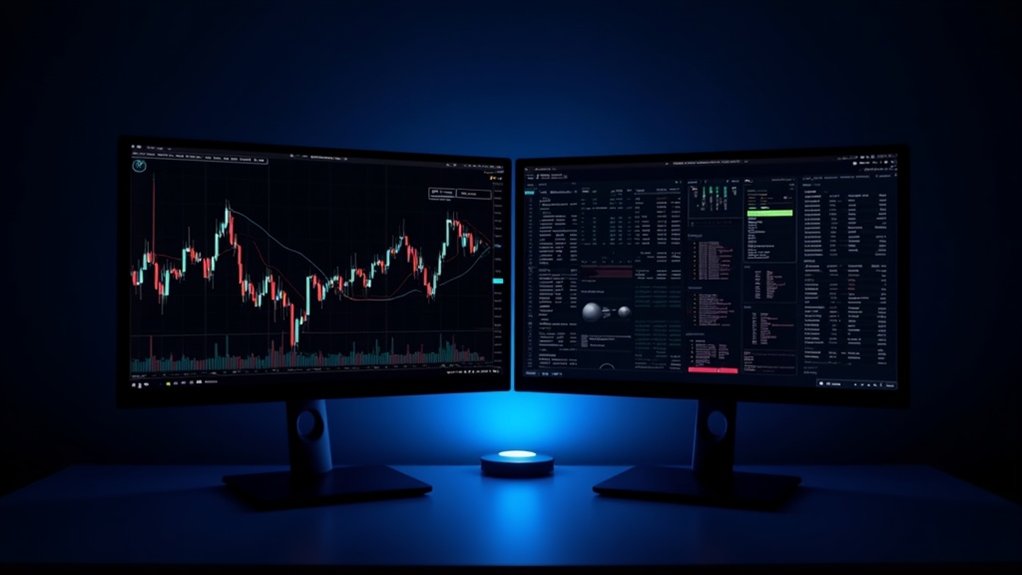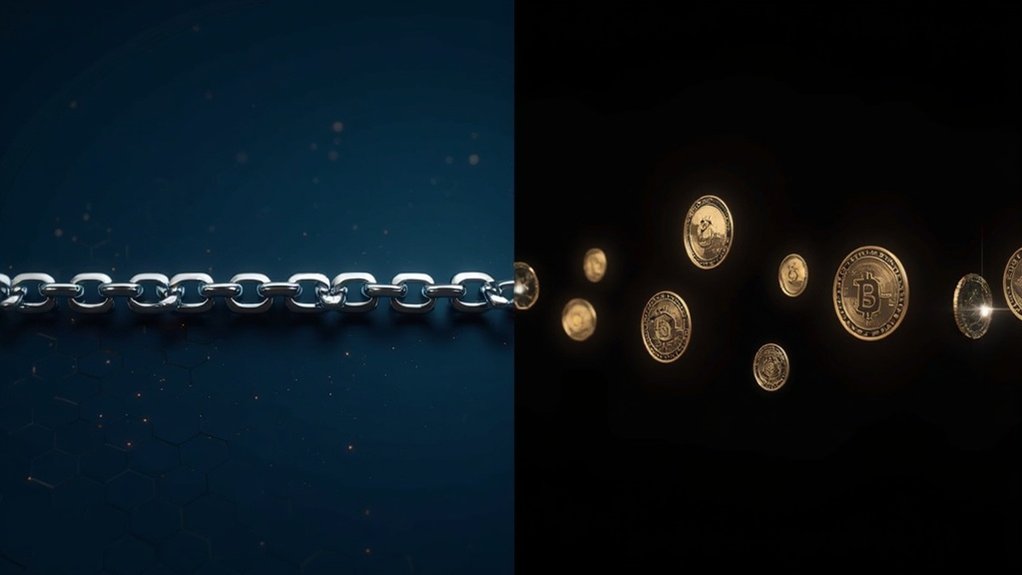Neither approach is definitively “best” in crypto trading. Technical analysis excels for short-term trades in liquid markets using chart patterns and momentum indicators. Fundamental analysis works better for long-term investments by evaluating tokenomics and real utility. Each has glaring weaknesses—technicals fail during unexpected news, while fundamentals adapt slowly to rapid market changes. Smart traders combine both: fundamentals to pick assets, technicals to time entries. The most profitable strategy? Not putting all eggs in one analytical basket.
When diving into the crypto market, traders face a fundamental choice: chart patterns or project potential?
Technical traders live and die by price charts.
They obsess over moving averages, RSI readings, and those fancy Japanese candlestick patterns.
It’s all about timing—catching momentum waves and riding them to profit town.
These folks aren’t particularly concerned with what a crypto project actually does.
Price action tells the whole story, or so they believe.
Fundamental traders roll their eyes at this approach.
They’re digging through whitepapers at 2 AM, stalking developer GitHub commits, and analyzing tokenomics models.
They couldn’t care less about yesterday’s price swing.
For them, it’s about finding projects with real-world utility that will thrive years from now.
Short-term volatility? Just noise.
The time horizons couldn’t be more different.
Technical analysis serves day traders and swing traders looking to cash in within days or weeks.
Perfect for crypto’s wild price swings.
Meanwhile, fundamental believers are playing the long game—months or years—waiting for the market to recognize a project’s true value.
Market conditions dictate which approach shines brighter.
Highly liquid trading pairs with established price history? Technical analysis thrives there.
But for those obscure alt-coins or newly launched projects? Good luck finding reliable chart patterns.
That’s fundamental territory.
Both approaches have glaring weaknesses.
Technical analysis falls apart when unexpected news drops.
Those beautiful chart patterns? Suddenly worthless.
And fundamental analysis? Great in theory, except crypto moves at light speed.
During bull runs, traders often see their technical strategies yield the highest returns as market optimism drives predictable price patterns.
Fundamental analysis aims to determine if a cryptocurrency is overvalued or undervalued based on its underlying project quality rather than market sentiment.
By the time you’ve finished your deep research, the market’s already priced it in—or worse, the project’s entire roadmap has changed.
Smart traders don’t pick sides.
They use fundamentals to choose what to buy and technicals to decide when to buy it.
Advanced platforms like altFINS combine the best of both worlds with over 120 analytics and automated pattern detection across multiple time horizons.
Because in crypto’s chaotic world, limiting yourself to a single approach is like bringing a knife to a gunfight.
Stupid.
Frequently Asked Questions
Can Beginners Succeed With Technical Trading in Volatile Crypto Markets?
Beginners face brutal odds in crypto technical trading.
The stats don’t lie—80% lose money their first year. Only about 4% actually make enough to live on.
Why? Poor risk management, emotional decisions, and getting tricked by market manipulation.
Most newbies risk way too much per trade. Successful traders? They stick to 1-2% per position, use stop-losses, and don’t chase quick riches.
Technical analysis works, but it’s no magic bullet. Patience required.
How Much Capital Should I Start With for Fundamental Trading?
For fundamental trading, beginners typically start with $1,000-$10,000.
Reality check: smaller amounts limit meaningful position-taking.
Markets don’t care about your learning curve.
Some traders use simulated accounts first—smart move.
Large-cap cryptos need less capital due to better liquidity.
Small-caps? More cash required to overcome those pesky spreads.
Institutions follow strict regulatory frameworks.
Regular folks? They’re just trying not to get wrecked while figuring out tokenomics and network fundamentals.
Which Trading Style Has Historically Yielded Better Returns in Crypto?
Fundamental trading has historically produced better returns in crypto. Period.
Buy-and-hold strategies aligned with fundamental analysis delivered those jaw-dropping 30,000%+ Bitcoin returns.
Technical trading? Sure, it’s scored big in volatile periods, but often gets wrecked during unexpected market shifts.
The numbers don’t lie—Bitcoin’s 230% annualized returns favor the patient fundamental approach.
Technical traders make quick cash in bull markets, but fundamental investors sleep better and, frankly, end up richer.
Do Professional Crypto Traders Combine Both Approaches?
Yes, professional crypto traders definitely combine both approaches. They’re not idiots.
Technical analysis gives precise entry/exit points while fundamentals provide directional bias.
Pros monitor moving averages alongside funding rates and liquidity shifts.
During volatility bursts, they adjust strategies based on technical patterns and fundamental catalysts.
It’s all about triangulation. One method alone? Recipe for disaster.
Their risk management frameworks incorporate both disciplines too.
The best traders blend systematic analysis with market psychology understanding.
How Do Market Manipulations Affect Technical Versus Fundamental Analysis?
Market manipulation hits technical analysis like a sledgehammer—immediately distorting the price and volume data these strategies rely on.
False signals everywhere.
Technical traders get burned when manipulators target support levels and trigger stop-loss cascades.
Fundamental analysis suffers too, but differently.
When prices detach from actual utility and network metrics, even the best valuation models fail.
DeFi oracle manipulation skews on-chain data.
The price you see? Might be totally fake.
Both approaches struggle, just on different timelines.









